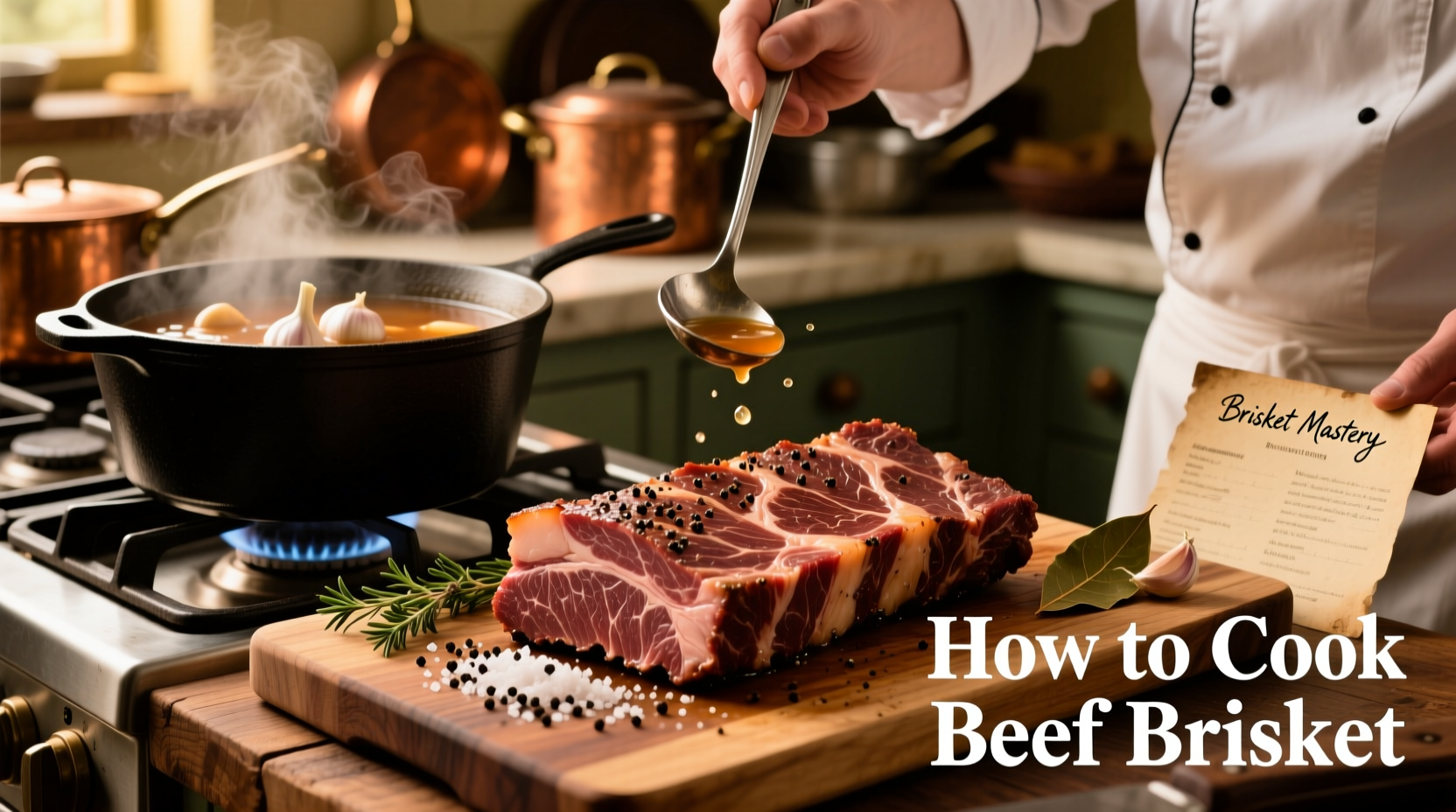The perfect method for cooking beef brisket involves seasoning a properly trimmed cut, slow-smoking at 225°F until it reaches 203°F internal temperature, then resting for at least 2 hours before slicing against the grain. This low-and-slow technique transforms tough connective tissue into melt-in-your-mouth tenderness while developing rich, complex flavors through the Maillard reaction and smoke infusion.
Mastering beef brisket cooking unlocks one of barbecue's most rewarding challenges. Whether you're using a smoker, oven, or pellet grill, achieving that perfect balance of tender texture and deep flavor requires understanding both the science and artistry behind this beloved cut. After decades of refining techniques across professional kitchens and backyard cookouts, I've developed a foolproof approach that consistently delivers restaurant-quality results at home.
Why Brisket Demands Special Attention
Beef brisket comes from the pectoral muscle near the front legs, making it naturally tough with abundant connective tissue. Unlike tender cuts like ribeye or filet, brisket requires specific cooking methods to break down collagen into gelatin. The USDA's Food Safety and Inspection Service confirms that slow cooking at low temperatures (200-250°F) is essential for transforming this tough cut into succulent perfection.
Your Brisket Success Roadmap
Phase 1: Selection and Preparation
Choosing Your Cut: Select a whole packer brisket (12-14 lbs) with consistent marbling. The flat section provides leaner slices while the point offers richer flavor. Look for bright red meat with creamy white fat - avoid grayish discoloration.
Trimming Technique: Remove hard fat caps down to 1/4-inch thickness. Round the edges to prevent burning - this simple step prevents those frustrating burnt corners that ruin presentation. Professional pitmasters at Texas A&M's Meat Science Laboratory emphasize that proper trimming significantly impacts smoke penetration and final texture.
| Brisket Section | Fat Content | Best Cooking Approach | Serving Style |
|---|---|---|---|
| Flat Cut | Leaner (15-20% fat) | Smoke at 225°F until 200°F internal | Sliced for sandwiches |
| Point Cut | Richer (25-30% fat) | Smoke until 205°F internal | Chopped for burnt ends |
| Whole Packer | Balanced (20-25% fat) | Smoke until probe-tender (~203°F) | Both sliced and chopped |
Phase 2: The Cooking Process
Dry Rub Application: Generously coat all surfaces with coarse kosher salt and freshly ground black pepper (the classic Texas-style "Dalmatian rub"). For enhanced flavor development, apply rub 12-24 hours before cooking - this dry brining process improves moisture retention and bark formation.
Temperature Management: Maintain a steady 225°F in your smoker or oven. The American Heart Association's kitchen safety guidelines stress consistent temperature monitoring to prevent foodborne illness while ensuring proper collagen breakdown.
Navigating The Stall: Between 150-170°F, evaporation cools the meat, causing temperature to plateau for hours. This natural phenomenon, documented in meat science research, requires patience. Resist the urge to increase heat - the collagen continues breaking down during this critical phase.

Phase 3: The Critical Resting Period
Never skip resting! Wrap the cooked brisket in butcher paper or aluminum foil, then place in an empty cooler for 2-4 hours. This allows juices to redistribute throughout the meat. Cutting too soon releases precious moisture, resulting in dry slices. The extended rest transforms texture from merely cooked to truly exceptional.
Phase 4: Slicing for Maximum Impact
Identify the grain direction by looking for parallel muscle fibers. Slice perpendicular to the grain in 1/4-inch thick pieces. For the point section, rotate your knife 90 degrees after the first cut to maintain proper grain orientation. This technique, used in top barbecue competitions, ensures each bite separates easily between teeth.
Troubleshooting Common Brisket Challenges
- Dry Results: Increase resting time to 4 hours or inject with beef broth before cooking
- Bitter Smoke Flavor: Use only clean-burning wood like post oak; avoid green wood or excessive smoke
- Uneven Cooking: Rotate brisket halfway through cooking to address hot spots
- Poor Bark Formation: Ensure proper fat trimming and avoid wrapping too early
Serving Your Masterpiece
Serve sliced brisket with traditional Texas accompaniments: pickled onions, white bread, and a simple vinegar-based sauce. For leftovers, chop remaining point section with barbecue sauce for incredible burnt ends. Properly stored in broth, cooked brisket actually improves in flavor after 24 hours in the refrigerator.
Frequently Asked Questions
How long should I cook a 12-pound brisket?
Plan for 1.5 hours per pound at 225°F, totaling approximately 18 hours. However, always cook to temperature (203°F) rather than time, as thickness and equipment variations significantly impact cooking duration.
Should I wrap my brisket during cooking?
Yes, wrapping in butcher paper or foil when internal temperature reaches 165°F (the stall phase) helps retain moisture and speeds up collagen breakdown. Butcher paper allows better bark development while foil creates a more steamed texture.
What's the ideal internal temperature for tender brisket?
For optimal tenderness, cook until 203°F internal temperature. At this point, collagen has fully converted to gelatin. The meat should feel like Jell-O when probed with a thermometer. Temperatures below 195°F often yield chewy results.
Can I cook brisket in the oven instead of a smoker?
Absolutely. Preheat oven to 275°F, place brisket fat-side up in a roasting pan with 1 cup beef broth, cover tightly with foil, and cook until probe-tender (about 1 hour per pound). While you'll miss smoke flavor, proper temperature control still delivers tender results.











 浙公网安备
33010002000092号
浙公网安备
33010002000092号 浙B2-20120091-4
浙B2-20120091-4